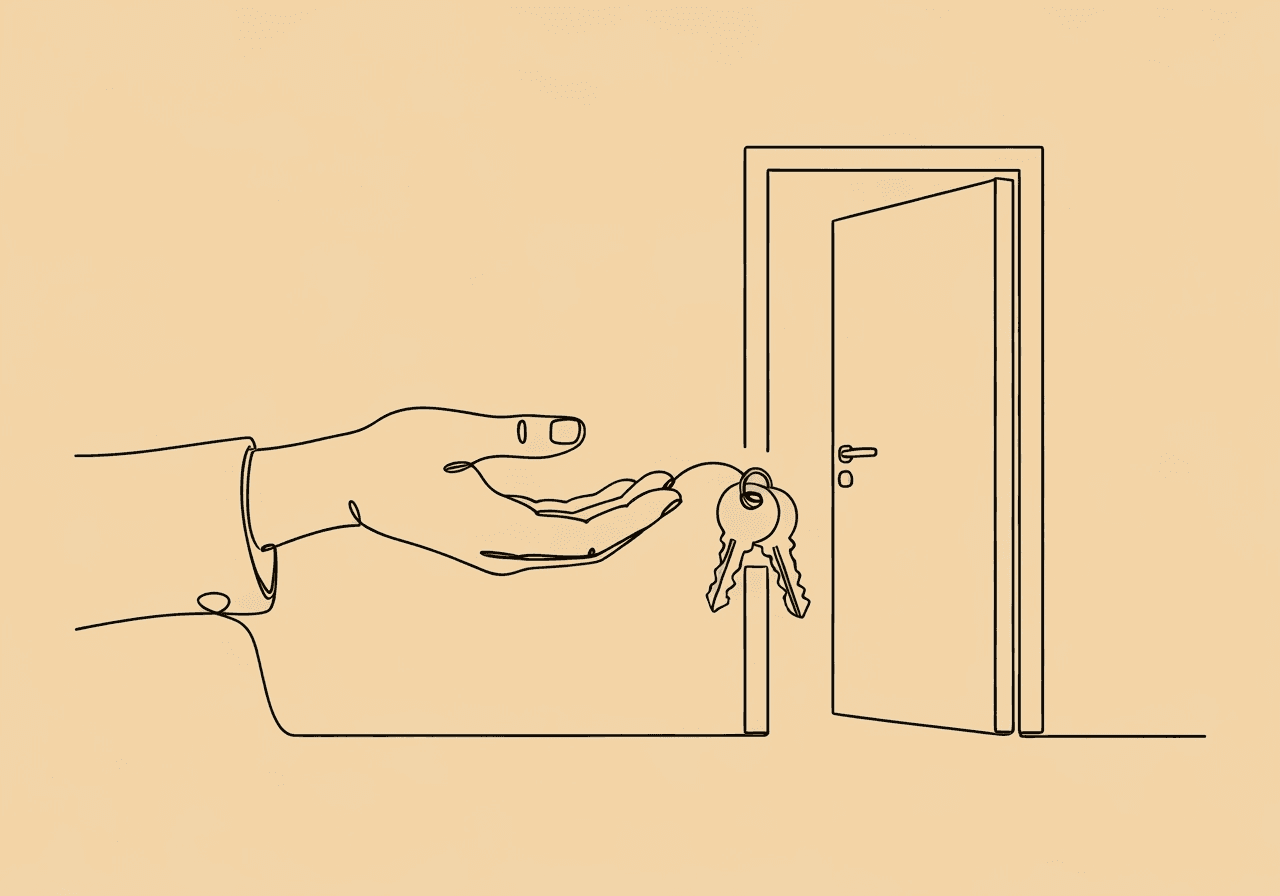ABA Client Assent Documentation Guide for BCBAs

ABA Client Assent Documentation Guide for BCBAs
Applied Behavior Analysis (ABA) is changing quickly these days. Ethical compliance can make or break client outcomes. Overlooking client assent risks more than just policy violations—it undermines trust and autonomy. As Board Certified Behavior Analysts (BCBAs), you're navigating a landscape where the BACB Ethics Code explicitly requires documenting a client's agreement to participate, even when they can't provide legal consent.
ABA client assent documentation ensures treatments align with individual dignity. It reduces burnout for providers and families while fostering genuine progress. In this guide, you'll gain actionable strategies to integrate assent into your workflows. These include distinguishing it from consent and handling refusals ethically.
Let's dive in. We'll explore the critical role of assent in ABA ethics and compliance. Next, key differences between consent and assent. Then, RBT responsibilities in spotting non-verbal cues. We'll cover proven documentation techniques too. Don't miss the step-by-step response hierarchy for refusals. Finally, practical tips for embedding assent in session notes.
Why Assent and Refusal Matter in ABA Compliance and Ethics
Assent and refusal form the ethical backbone of ABA. They ensure clients aren't just complying but actively participating. Per BACB standards, behavior analysts must obtain assent "when applicable" alongside informed consent. This promotes client autonomy and dignity. Section 2.11 mandates explaining procedures and documenting the client's willingness. This applies especially to those unable to give legal consent due to age or capacity.
Failure to prioritize assent can lead to ethical breaches, eroded therapeutic rapport, and even legal scrutiny Clinical Informed Consent and ABA. Research shows that honoring assent builds self-advocacy skills in learners. It potentially reduces reliance on coercive methods and improves long-term engagement What is “Assent” in ABA Intervention?. For BCBAs, this means shifting from compliance-focused sessions to collaborative ones.
Refusal signals—like avoidance or distress—prompt immediate reassessment rather than persistence. In practice, assent documentation supports compliance by providing evidence of client-centered care. It aligns with broader ABA goals of fostering independence. Professional guidelines from organizations like the Association for Science in Autism Treatment (ASAT) emphasize this.
Distinguishing Between Consent and Assent in ABA Client Assent Documentation
Consent and assent serve distinct purposes in ABA therapy, though they're interconnected. Consent refers to the formal, legal permission obtained from a guardian or authorized representative. It allows initiation and continuation of treatment. This involves a comprehensive disclosure of risks, benefits, and alternatives. It's documented in writing before services begin.
Assent, by contrast, captures the client's own voluntary agreement to participate. This can be expressed through verbal or non-verbal means. Per BACB standards, assent is "vocal or nonvocal verbal behavior indicating willingness to participate." It plays a key role for individuals like children or those with intellectual disabilities who can't legally consent.
This distinction matters because consent alone doesn't guarantee a client's comfort—assent does. For instance, a guardian might consent to discrete trial training. But if the client shows ongoing refusal through turning away or negative affect, proceeding without addressing assent violates ethical standards. As noted in a review from the Association for Science in Autism Treatment (ASAT, 2023), assent must be ongoing. Check it before activities and honor it to respect autonomy.
BCBAs should train teams to seek assent routinely. Use simple queries like "Is this okay?" This practice complies with ethics. It also differentiates true engagement from coerced participation. The result? More effective, humane interventions.
The RBT's Role in Recognizing and Documenting Non-Verbal Signs of Refusal
Registered Behavior Technicians (RBTs) are on the front lines. Their ability to spot non-verbal signs of refusal is essential for ethical ABA delivery. Refusal often manifests subtly in clients who can't vocalize dissent. Examples include avoidance, like pushing away materials. Or signs of distress, such as crying or rigid posture. Disengagement, like averting gaze, counts too.
RBTs must observe these cues in real-time. Pause interventions to prevent escalation. Under BACB guidelines, RBTs implement behavior plans while monitoring for assent withdrawal. Report any concerns to supervising BCBAs promptly. This involves training in recognizing behavioral indicators tied to emotional states. Resources from Master ABA (2023) emphasize this.
Documentation starts with objective notes. Record the specific cue, context, and response. For example: "Client turned away from task at 10:15 AM; session paused for break." For more on RBT ethics, check our guide on RBT documentation essentials.
By honing these skills, RBTs contribute to a culture of respect. Refusals inform plan adjustments rather than being overlooked. This frontline vigilance supports BCBAs in maintaining compliance and client trust.
Effective Documentation Methods for ABA Client Assent Documentation and Refusal
Documenting assent and refusal requires precision to meet ethical and legal standards. Start with narrative notes in session summaries. Capture how assent was obtained, like "Client nodded and approached table independently." Note any withdrawal too, such as "Client pushed flashcards away, indicating refusal; activity modified to preferred play."
Use structured forms for tracking. Assent checklists log verbal/non-verbal indicators before and during activities. Here's a quick reference list:
- Timestamps: Note when assent was checked or withdrawn.
- Behavioral descriptions: Describe cues like smiles or avoidance.
- Outcomes: Record adjustments, like switching tasks.
- Completion: Finish promptly, ideally within 24 hours, as recommended by ABA service providers.
Per BACB standards, document all consent-related processes. This extends to assent for transparency. For non-verbal clients, incorporate behavioral data. Rate engagement on a scale, like 1-5 for cooperation. Note environmental factors too.
Tools like digital platforms streamline this. They ensure HIPAA compliance while allowing easy BCBA review. Incorporate examples from real scenarios. For instance, note "Client smiled and engaged in matching game after assent check." This justifies continued services.
For deeper insights into ethical note-taking, explore our article on BCBA documentation strategies. These methods transform documentation from a chore into a tool for accountability. They help BCBAs demonstrate adherence to assent protocols.
Ethical Response Hierarchy for Handling Refusal in ABA Client Assent Documentation
When refusal arises, BCBAs must follow a structured hierarchy. This balances client autonomy with treatment integrity. The steps ensure ethical responses. Below is a summary table for quick reference:
| Step | Action | Key Consideration | Documentation Tip |
|---|---|---|---|
| 1. Immediate Honor | Pause the activity and assess for safety risks. | Per BACB Ethics Code section 2.09, involve clients in decisions as much as possible. | Note the cue and pause time. |
| 2. Team Consultation | Debrief with RBTs on observed cues; explore modifications like smaller steps or preferences. | Address underlying needs through functional assessment. | Record team input and changes. |
| 3. Plan Revision | Revise the behavior plan if refusal persists; notify guardians. | Use refusal as feedback for tailoring interventions. | Log revisions and guardian communication. |
| 4. Escalation (If Needed) | Prioritize de-escalation for severe behaviors impacting safety. | Avoid continuation; document rationale. | Detail safety rationale and de-escalation steps. |
A study in the Journal of Applied Behavior Analysis (2023) underscores that assent-based responses enhance long-term compliance. They build trust. This hierarchy turns refusals into opportunities for growth. Train your team on it to foster consistent, compassionate practice.
Integrating Assent Checks into Daily BCBA Session Notes for Assent Documentation
For BCBAs, weaving assent into session notes justifies service continuation or modifications. It aligns with ethical documentation mandates. Begin each note with an assent status. Example: "Assent obtained via client approaching session area without prompts."
Describe integration throughout. Note checks before transitions, like "Pre-task assent: Client selected activity from visual choice board." Use data to track patterns. If refusal spikes during certain targets, quantify it. For example: "2/5 trials with withdrawal; adjusted prompts."
This evidence supports plan revisions. It demonstrates BACB compliance under standard 2.11. Link notes to broader progress. When assent is consistent, highlight it as a strength. For issues, propose adaptations.
Refer to related resources like our RBT non-progress guide. This covers handling stagnant data ethically. Routine integration streamlines audits. It also reinforces a client-first approach. Notes reflect dynamic, respectful therapy.
Frequently Asked Questions
What is the difference between assent and consent in ABA therapy?
Assent is the client's voluntary, ongoing agreement to participate—often non-verbal. Consent is the legal permission from a guardian. Per BACB standards, both are required for ethical practice. Assent honors the client's autonomy, even if they can't consent legally. This ensures treatments respect individual preferences alongside family decisions.
How can BCBAs obtain assent from non-verbal clients?
Observe behaviors like approaching materials or positive affect as indicators. Or use selection from visuals. Ask simple yes/no questions or offer choices before activities. ASAT (2023) recommends this approach. Document these cues consistently to monitor ongoing willingness. Adjust if withdrawal signs like avoidance appear. For example, switch to a preferred task right away.
What are common signs of assent withdrawal in ABA sessions?
Signs include pushing away items, crying, turning away, or verbal "no"s. These differ from unrelated challenging behaviors. Honor them promptly unless safety demands otherwise. Master ABA guidelines (2023) stress this. Documentation should detail the cue, your response, and any modifications. This supports ethical adjustments and team debriefs.
How should RBTs document client refusal ethically?
RBTs record objective details: the refusal behavior, time, activity, and immediate response. For example, "Paused for break after client cried." Complete notes promptly using narrative or forms. Report to BCBAs for review. This aligns with BACB standards. It ensures transparency and prevents ethical lapses in assent processes. Use checklists for consistency.
Why is ongoing assent monitoring important for BCBA compliance?
It prevents coercive practices and promotes dignity. It provides data for plan efficacy too. Per BACB standards, it fosters autonomy. This reduces risks like complaints or ineffective therapy. Regular checks enhance client engagement. They justify service modifications. Think of it as building trust one session at a time.
How does assent withdrawal impact ABA treatment plans?
Assent withdrawal signals a need for revision—like simplifying tasks or adding choices. This maintains collaboration. Ignoring it can erode trust and outcomes. A Journal of Applied Behavior Analysis study (2023) notes this at PMC10281413. Use it as feedback to tailor interventions. Ensure ethical, client-centered progress every step.
What are the legal implications of poor ABA client assent documentation?
Inadequate documentation can lead to ethical complaints or legal challenges. It may violate informed consent laws under HIPAA or state regulations. Courts view failure to honor assent as potential negligence, especially in cases of distress. Always cite BACB standards in notes to show due diligence. Consult legal experts for your jurisdiction to stay protected.
In synthesizing these principles, ABA client assent documentation stands out as an essential ethical step we can't skip. It safeguards client dignity while upholding BACB standards. By distinguishing assent from consent, empowering RBTs to spot refusals, and embedding checks into notes, BCBAs can cultivate truly collaborative therapies. These respect individual voices.
The practical implications are clear. This approach not only mitigates compliance risks but also boosts engagement and long-term skill acquisition. It's evidenced by professional guidelines from the BACB and ASAT.
To apply this today:
- Review your current protocols. Add assent checklists to session prep. Train RBTs on non-verbal cues in your next team meeting.
- Audit recent notes for assent references. Revise templates to include dedicated fields for ongoing monitoring.
- Consult guardians on assent strategies. This fosters partnership to reinforce client autonomy.
Prioritizing assent transforms ABA from directive to empowering. It delivers the supportive, evidence-based care your clients deserve.
(Word count: 1,785)
Popular in Compliance & HIPAA
- 1
ABA Documentation Checklist: RBT Compliance Guide 2025
5779 min read - 2
BCBA Procedural Fidelity Checklist: Essential H-6 Guide
5376 min read - 3
RBT Renewal Competency Documentation Guide for BCBAs
4036 min read - 4
BCBA Ethical Documentation Best Practices
3626 min read - 5
RBT Supervision Log Audit Checklist for BCBAs
3176 min read
Popular in Compliance & HIPAA
- 1
ABA Documentation Checklist: RBT Compliance Guide 2025
5779 min read - 2
BCBA Procedural Fidelity Checklist: Essential H-6 Guide
5376 min read - 3
RBT Renewal Competency Documentation Guide for BCBAs
4036 min read - 4
BCBA Ethical Documentation Best Practices
3626 min read - 5
RBT Supervision Log Audit Checklist for BCBAs
3176 min read
Related Resources
Explore more helpful content on similar topics

Guide to BCBA Service Termination Documentation
Navigating BCBA service termination documentation? Learn essential ethical guidelines under BACB ethics 2.15 for justifying discontinuation, ensuring continuity of care, and handling data transfers to new providers.

BCBA Communication Documentation: Ethical Guide
Learn key strategies for BCBA communication documentation under Ethics Code 3.11. Discover how to log consents, stakeholder interactions, ethical dilemmas, and transitions for ABA compliance and accountability.

BCBA Contingency Plan Documentation: Best Practices
Master BCBA contingency plan documentation to comply with BACB Code 3.14. Discover best practices for managing ABA service disruptions, staffing shortages, crises, and more for ethical, uninterrupted client care.